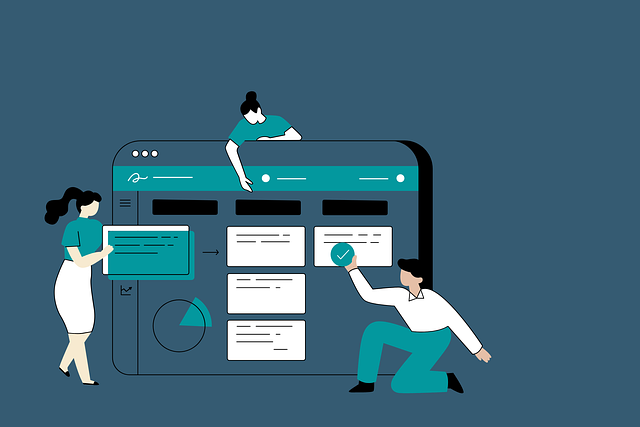When it comes to digital marketing, most businesses are laser-focused on one thing: maximizing ROI. But here’s a reality check: the biggest obstacles to your ROI might not be what you’re doing but rather what you’re not seeing. Every dollar you spend might seem like it’s working hard, but under the surface, hidden costs are chipping away at your budget—and your bottom line. So, let’s dig deep, get real, and uncover the hidden costs that are quietly draining your marketing budget.
1. Misaligned Goals and the Price of Confusion
One of the most significant hidden costs in digital marketing is the result of unclear or misaligned goals. Every marketing campaign should start with a clear purpose: are you aiming for brand awareness, lead generation, or direct conversions? But here’s where businesses often go astray. Teams have different interpretations of success. Sales wants conversions; marketing wants engagement; leadership wants growth.
When goals aren’t aligned, efforts get diluted. You might be running a highly engaging social media campaign, but if your target is conversions, those “likes” and “shares” won’t get you closer to your goal. You’re spending money on results that look good but don’t move the needle.
Action Tip: Start each campaign by bringing all key stakeholders to the table. Agree on a single, measurable goal and make sure every campaign decision aligns with this goal. This alone can eliminate a lot of wasted effort and help your team focus on the metrics that matter most.
2. Ad Fatigue: When Too Much is Just Too Much
Ad fatigue happens when audiences see your ads too frequently. They might have been interested initially, but repeated exposure causes them to tune out. Over time, your click-through rates drop, and you end up paying for impressions that no longer deliver value. You might not even realize it, but ad fatigue is a silent drain on your budget, especially if you’re not rotating creatives or targeting different audiences.
Digital ads need to be fresh to stay effective. Stale ads lead to decreased engagement, wasted spend, and a drop in overall campaign performance.
Action Tip: To combat ad fatigue, create multiple versions of your ads with different visuals and messages. Rotate these versions frequently, ideally weekly, and monitor performance to know when it’s time to refresh your creatives. This approach keeps your content engaging and helps you maximize every ad dollar spent.
3. The Pitfall of Overly Broad Targeting
Reaching as many people as possible sounds great on paper, but the reality is that broader targeting isn’t always better. When you’re targeting a wide audience, you’re likely paying for impressions or clicks from people who may never convert. Think about it this way: if you’re selling premium athletic wear, you wouldn’t want your ads showing up for people interested in low-cost apparel. Broad targeting means you’re paying to reach people who aren’t genuinely interested in what you offer.
Precision targeting might seem more expensive upfront, but it saves you money in the long run by focusing on potential customers who are actually interested in your product.
Action Tip: Take a closer look at your audience targeting. Use lookalike audiences, retargeting, or even geographic and demographic filtering to narrow your audience. A smaller, more engaged audience is always better than a broad, uninterested one.

4. Underestimating the Cost of Content Production
Quality content is essential for digital marketing success. However, high-quality content doesn’t come cheap, and the cost doesn’t stop at creation. There’s also the cost of planning, editing, distributing, and promoting each piece. When you add up these costs, you might realize that a single blog post or video is much more expensive than it initially seemed.
The biggest issue is when content is created without a clear plan. Without a distribution or promotion strategy, even great content can fall flat, wasting the money spent on creating it. Just posting on your blog or sharing a video on social media isn’t enough—you need a strategy to drive traffic and engagement.
Action Tip: Before producing any content, define its purpose and outline a distribution plan. Whether it’s a blog post, video, or infographic, have a plan for getting it in front of the right audience. Use paid and organic methods to promote it and track the ROI to ensure your content spends pay off.
5. Ignoring Customer Retention and the High Cost of Churn
Digital marketing often focuses heavily on acquisition, pouring money into campaigns that attract new customers. But keeping customers is far more cost-effective than constantly chasing new ones. The cost of churn—the percentage of customers who stop buying from you—can be astronomical. When you lose a customer, you’re losing future sales, which impacts your ROI over time.
Many businesses don’t realize the impact of churn on their marketing costs. Every time you lose a customer, you’ll have to spend more to find a new one, making your digital marketing budget work twice as hard to achieve the same revenue.
Action Tip: Invest in retention strategies like loyalty programs, email marketing, and personalized offers for existing customers. Track your churn rate and aim to lower it by enhancing the customer experience and maintaining engagement post-purchase. A little investment in retention can save you significantly in acquisition costs.

6. Overlooked Platform Fees and Hidden Costs of Tools
Digital marketing often requires a mix of tools—analytics, email platforms, CRM, design software, and ad platforms. Each of these tools comes with a cost, often including additional fees for certain features, data storage, or add-ons. It’s easy to sign up for a tool thinking it’s just $50 a month, but over time, these costs add up, especially if you’re using multiple tools that overlap in functionality.
Many businesses also overlook platform fees on advertising networks. For instance, running ads on Facebook or Google comes with additional fees for things like special targeting options or premium placements. Without factoring these in, you might be underestimating your actual spend.
Action Tip: Regularly audit your tools and software subscriptions. Look for redundancies—do you really need separate platforms for social scheduling and analytics, or can one tool handle both? Trim down your subscriptions to essentials only, and make sure you fully understand the costs on your ad platforms.
7. Frequent Campaign Adjustments: The Cost of Constant Optimization
Adjusting campaigns based on performance data is crucial, but frequent changes can also be costly. Each adjustment comes with the need for fresh creatives, recalibration of targeting, or even re-education of your team on new strategies. Moreover, frequent changes can disrupt your campaign’s learning phase (particularly on platforms like Facebook), meaning you’re spending more to “re-learn” the audience every time.
While optimizing campaigns is important, doing so too frequently may lead to extra costs without delivering any substantial improvement in ROI.
Action Tip: Set realistic timelines for optimization. Monitor performance, but allow campaigns enough time to gather meaningful data before making adjustments. Find a balance that allows you to make informed changes without incurring unnecessary costs.
8. Data Overload and the Expense of Analysis Paralysis
With so much data available, many businesses fall into the trap of collecting and analyzing everything. This leads to analysis paralysis, where you’re stuck sifting through endless numbers without making any actionable decisions. Not only does this waste time, but it also drains resources, especially if you’re paying for data analysis tools or external consultants.
Not every metric is critical. To maximize ROI, focus on the data that directly ties back to your business goals rather than getting lost in the sea of vanity metrics.
Action Tip: Define a core set of KPIs for each campaign and focus on them exclusively. This approach helps reduce analysis time and lets you act quickly on insights that matter.

Related: Check out our free SEO suite

9. Failing to Account for Opportunity Costs
Opportunity cost is what you lose by choosing one marketing tactic over another. If you’re investing heavily in paid search but ignoring social media, the opportunity cost is the potential returns you’re missing from social channels. Many businesses overlook opportunity cost, thinking of it as abstract, but it’s very real when you consider what your budget could achieve elsewhere.
Sometimes, sticking with one strategy for too long can drain your budget without giving you the chance to test new, potentially more profitable tactics.
Action Tip: Regularly assess the performance of each channel and compare it to other potential channels. Allocate a portion of your budget for experimenting with new strategies, even if they’re small tests. This approach can help you discover profitable tactics without committing too much at once.
10. Unmeasured Employee Time and Effort
In-house digital marketing requires significant time and effort from your team. Time spent on tasks like campaign planning, content creation, and data analysis comes with an actual cost, though it might not show up directly in your budget. Each hour spent on a campaign, especially on tasks that don’t yield results, is money lost that could be used more effectively.
Action Tip: Track the time your team spends on each aspect of a campaign, especially for ongoing activities like content production and ad management. If a task is taking more time than it’s worth, consider outsourcing it or finding ways to automate repetitive work.
11. Overlooked Training and Upskilling Costs
Digital marketing is constantly evolving, with new platforms, tools, and strategies emerging all the time. To keep up, your team needs ongoing training and upskilling. However, many companies don’t account for the cost of training in their marketing budgets. Workshops, certifications, online courses, and even the time spent on learning new tools all add up. Without this investment, you risk falling behind competitors or implementing inefficient strategies that hurt your ROI.
Ignoring training can also lead to poor campaign execution, lower productivity, and mismanagement of tools. Even if training costs seem minor individually, the long-term expense of an untrained team can be far higher than the initial investment in continuous learning.
Action Tip: Set aside a portion of your budget specifically for training and development. Focus on high-impact areas, such as analytics, copywriting, or new ad platform capabilities. Evaluate skill gaps within your team to identify where training will make the biggest impact.

12. Inaccurate Budget Allocation Across Channels
It’s easy to assume all channels contribute equally to your goals, but that’s rarely the case. Without accurate budget allocation, you might be pouring too much money into channels that aren’t performing well and underinvesting in those that are driving real results. This misalignment leads to wasted spend and lower ROI.
For example, if your Google Ads campaigns have a lower cost per acquisition (CPA) than your Facebook Ads, but you’re spending equal amounts on both, you’re not maximizing your budget effectively. Analyzing performance across channels and adjusting spend accordingly can lead to better returns without increasing your total budget.
Action Tip: Perform a monthly or quarterly analysis of each channel’s performance. Reallocate funds based on channels with the best conversion rates or cost per acquisition. Remember, flexible budget allocation allows you to adapt to performance changes and focus on what’s truly driving results.
13. Neglecting the Cost of Brand Consistency
Maintaining a cohesive brand image across all digital channels can be a silent drain on resources. Brand consistency involves everything from unified messaging and visual elements to tone of voice and customer interactions. Without it, you risk confusing your audience, diluting brand perception, and ultimately losing customers who value consistency.
Every new platform, ad campaign, or social media post should feel like it’s from the same brand. Keeping this uniformity requires time, planning, and often additional creative resources. But many businesses overlook these costs and end up paying in the form of brand confusion and customer attrition.
Action Tip: Establish clear brand guidelines and make sure they’re accessible to everyone on your team. Periodically audit your content across channels to check for consistency. Consider assigning a brand manager or using brand consistency tools to streamline this process.
14. Underestimating Seasonal and Market Changes
Digital marketing success is often influenced by external factors, such as seasonality and changes in market trends. Spending patterns can shift drastically during peak seasons, holidays, or even due to cultural events and social movements. If you’re not accounting for these fluctuations in your budgeting, you risk either overspending or missing out on valuable opportunities.
For instance, brands that rely on holiday sales might need to double their budget for Q4. Without adjusting the budget or preparing your campaigns accordingly, you may lose ground to competitors who are better prepared. Reacting to these trends too late can lead to rushed and expensive decisions that hurt your ROI.
Action Tip: Look back at historical data to identify seasonal trends and market changes relevant to your industry. Prepare a flexible budget that allows you to increase spending during high-opportunity periods and reduce it during slower times. Planning ahead can save you from last-minute expenses and ensure you capitalize on trends effectively.

15. The Impact of Poor Communication and Internal Bottlenecks
A well-planned digital marketing campaign can still fail if internal communication and workflows are flawed. Miscommunication within teams or departments can cause delays, lead to errors, and slow down the decision-making process. This is particularly common in larger organizations where approvals, cross-departmental collaboration, and multiple hand-offs can stall campaigns.
These internal bottlenecks not only waste time but can also impact your budget. For instance, if a campaign is delayed, you might miss an ideal posting time, or if a project is redone due to misunderstandings, you’re paying for extra hours unnecessarily.
Action Tip: Streamline communication channels and establish a clear workflow for campaign approvals, edits, and launches. Encourage a culture of open communication to reduce misunderstandings. Tools like project management software can help ensure everyone is on the same page, speeding up processes and reducing costs tied to delays.
16. Undetected Small Expenses Adding Up
The small, incidental expenses in digital marketing are easy to overlook because they don’t seem like much individually. But over time, they can accumulate and add up to a considerable sum. Examples include fees for stock photos, paying for small design changes, short-term subscriptions, or even sponsored posts and boosts on social media. When left untracked, these small expenses can drain your budget without providing significant returns.
Monitoring these incremental costs can reveal where unnecessary spending is happening. For example, if you’re frequently paying for small design tweaks or quick boosts, consider whether it would be more cost-effective to invest in a design subscription or a monthly ad budget instead.
Action Tip: Track every expense, no matter how small, and categorize them. Review these expenses periodically to see if there are opportunities to reduce them or if they can be consolidated. Small adjustments here can lead to better budget control and improved ROI over time.
Final Thoughts: A Mindful Approach to Digital Marketing ROI
Digital marketing success doesn’t just depend on revenue generated; it hinges on what you’re spending behind the scenes. The hidden costs—from misaligned goals to data overload and opportunity costs—can quietly erode your ROI if left unchecked. By becoming more mindful of these often-overlooked expenses, you can make smarter, more strategic decisions with every marketing dollar.
In a world where everyone wants fast returns, remember that sometimes the best way to improve your ROI isn’t by spending more; it’s by uncovering and addressing the hidden drains on your budget. The more you understand about where your money is truly going, the better equipped you’ll be to build a sustainable, high-performing digital marketing strategy.
READ NEXT:
- Best Digital Marketing Agency In Los Angeles, California
- Best Digital Marketing Agency In San Jose, California
- Best Digital Marketing Agency In Stockton, California
- Best Digital Marketing Agency In Oakland, California
- Best Digital Marketing Agency In Santa Ana, California
- Best Digital Marketing Agency In San Francisco, California






















Comments are closed.